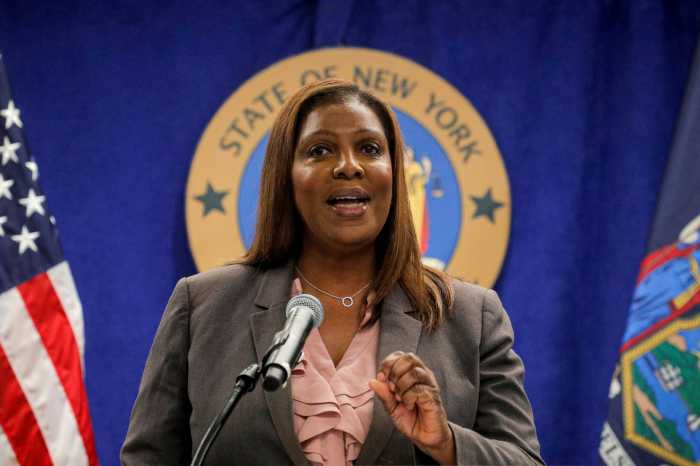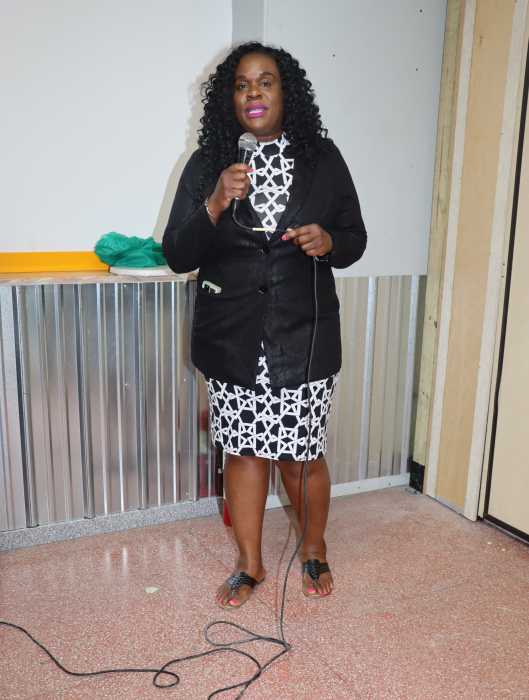New York City Mayor Eric Adams, New York City Economic Development Corporation (NYCEDC) President and Chief Executive Officer, Andrew Kimball, and Mayor’s Office of Talent and Workforce Development (NYCTalent) Executive Director Abby Jo Sigal recently announced the release of the Green Economy Action Plan — a first-of-its-kind plan that lays out a roadmap to growing the city’s green economy.
Adams said the plan invests in jobs and sectors that will help the city combat climate change, and train and position New Yorkers — particularly those from environmentally-disadvantaged communities — to benefit from the nearly 400,000 projected “green-collar” jobs in New York City by 2040.
Critical to this plan is the creation of a new “Climate Innovation Hub” at the Brooklyn Army Terminal, which will help grow green technology startups and businesses, and which will be joined together with the Trust for Governors Island and the Brooklyn Navy Yard Development Corporation to create a green economy ecosystem across three campuses that will support 5,000 new permanent jobs, educate and train 2,100 New Yorkers, and generate $55 billion of economic impact.
Adams said the Green Economy Action Plan delivers on another promise in his State of the City address, and builds on his commitment to invest in future-focused industries and create a “Harbor of the Future” with job and innovation hubs along the East River.
“Our city didn’t recover the nearly 1 million jobs we lost during the pandemic and reach a new private-sector job high by looking backward — we did it by building an economy of the future. And we must draw on all our resources to protect our city from the effects of climate change,” said Mayor Adams.
“From building resiliency projects and retrofitting apartment buildings, to installing solar panels, EV charging stations, and wind turbines, ‘green-collar’ jobs are already in demand and leading the way. Our Green Economy Action Plan will harness the growth of a new kind of industrial revolution and give New Yorkers the tools they need to build a resilient and prosperous city and thrive in our future-focused economy,” he added.
The mayor said the Green Economy Action Plan delivers the first forecasting of New York City’s green economy and job growth through 2040.
He said New York City’s green economy will host nearly 400,000 jobs by 2040 — up from 133,000 today — “as it becomes the anchor of a prosperous, equitable, and just future for New Yorkers, while it simultaneously advances the city’s ambitious goals to reduce the city’s threats due to climate change.”
The plan identifies key occupations that are essential to growing the green economy and highlights 21 occupations that provide pathways to economic mobility, many of which do not require higher education degrees.
Highlights of the plan include: Establishing a Climate Innovation Hub: NYCEDC will invest up to $100 million to develop a Climate Innovation Hub at the Brooklyn Army Terminal; Creating Green Training Facilities in Every Borough: NYCTalent — in partnership with other city agencies, as well as private partners — will develop a workforce training facility in every borough with programming to train New Yorkers for green-collar jobs; and Activating a Harbor Climate Collaborative: The Brooklyn Navy Yard, NYCEDC, and the Trust for Governors Island are collectively investing $725 million to build a green economy ecosystem across six-million-square-feet and 72 acres linked by NYC Ferry across New York Harbor.
The plan also includes: Activating Public Sites for Electric Vehicle (EV) Charging: NYCEDC is activating two acres of land near JFK airport to create the largest EV charging facility in the city, with 65 public EV chargers including 12 rapid ones; and Creating Tax Incentives for Battery Storage: NYCEDC will utilize New York City’s Industrial Development Agency tax incentives to activate 500 Megawatts (MW) of battery storage capacity and support other green economy uses.
“This first-of-its-kind plan lays out a series of commitments and strategies that will bolster economic growth, create thousands of jobs, encourage public-private partnerships, and ensure a just transition to a green economy that all New Yorkers can contribute to and benefit from,” Kimball said. “There is no better location for innovation than at the historic Brooklyn Army Terminal, located on the waterfront in the heart of Sunset Park, which is turning into a center for clean tech innovation and manufacturing.
“Climate tech growth at the Brooklyn Army Terminal will be further catalyzed by the establishment of the Climate Innovation Hub and through a unique partnership with the Brooklyn Navy Yard and the Trust for Governors Island, known as the Harbor Climate Collaborative,” he added. “Collectively, these three remarkable city assets, all connected by a short NYC Ferry ride, will be at the forefront of climate innovation, commercialization, and workforce development for decades to come.”
“By co-authoring the Green Economy Action Plan, we wrote the roadmap for an historic opportunity to tackle the climate crisis, create jobs, and drive economic mobility, while positioning New York City as a global leader in the green economy,” Sigal said. “The plan represents the city’s commitment to concrete strategies to ensure that all New Yorkers contribute to and benefit from our city’s growth and prosperity.”
Through a Request for Proposal to be released on March 18, 2024, NYCEDC will seek an operator for its new Climate Innovation Hub at the Brooklyn Army Terminal. Potential partners can learn more about the vision for the hub and complete a partner form to register interest.


























